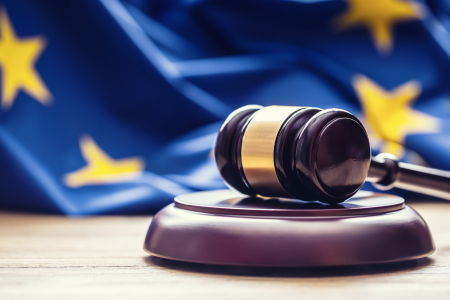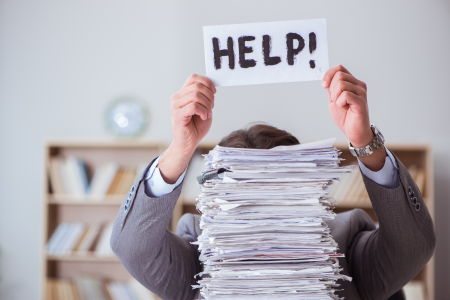July 28th, 2021
One business owner deals with this business practice on a daily basis while another (almost) never has to deal with it: invoicing abroad. When sending invoices to different countries, different tax rules may apply than what you’re used to—especially if you’re used to dealing with sales and use tax in the U.S. That’s because most major economies rely on value-added tax (VAT) for charges related to goods and services.
VAT rate differs per country. The same goes for the specific goods or services that must be taxed, along with the customer types that fall under the VAT obligation (i.e., consumer or business). All of these VAT rate regulations and exemptions can be very confusing (even for experienced professionals) and mistakes are often made.
One of the most common mistakes is that the full VAT rate from the country of origin is charged on the invoice instead of applying the 0% rate. Another common mistake is forgetting to include foreign invoices in a VAT return. Mistakes like these can result in too much or too little VAT being paid, and it takes a lot of time to get everything sorted out. And in addition to making sure that the correct rules are applied, it’s also very important to keep up with changes in VAT regulations. For instance, there has recently been a major VAT change in the e-commerce space that impacts many businesses (more on this below).
To guide you in the right direction when it comes to international (electronic) invoicing and VAT rate in particular, here’s some useful information that’ll help boost your confidence when it comes time for doing business with countries inside and outside of the European Union (EU).
Sending an Invoice Within the EU: With or Without VAT?
When it comes to sending invoices from one EU country to another, different VAT rules apply depending on the situation. This differs for goods and services. Here’s an overview:
If you supply goods and/or services to consumers within the EU via an e-commerce website…
1. As of July, 1st, 2021, if the buyer does not file a VAT return, the VAT that is applicable in the buyer's country must be charged.This means that the supplier must register in the EU country of the buyer in order to pay the applicable VAT rate, or utilize the one-stop-shop reform to avoid too many VAT registrations. There are no longer thresholds for distance selling.
The major change here is that, regardless of revenue accrued from B2C e-commerce sales within the EU outside of your home country, you are obliged to pay the VAT rate of the EU country of destination (where the goods and/or services have been received). This means that you must also obtain a VAT identification number in every EU country in which you have made a sale. If you only operate in one or few EU countries aside from your home country, you may opt to register in each country individually.
However, you may also make use of the one-stop-shop reform which enables you to avoid multiple registrations and declare all EU transactions in one declaration. In this instance, the tax authorities of your home country ensure that the applicable VAT is remitted to the country or countries in which the VAT should have been paid. You will also receive a special VAT number that can be shown at customs to get exemption on import. In this way, VAT is only due on the supply to the private individual and no longer because of the import of the goods. This also applies to B2C supplies of services other than telecommunications, broadcasting, and electronic services (TBE). You can read more on that here.
Please note that this does not apply to B2B transactions. See below.
2. If the buyer does file a VAT return, then the 0% rate must be applied. The buyer calculates the VAT according to the rate in the EU country where they are located and pays the applicable VAT rate. For the supplier, this is referred to as intra-community supply. For the buyer, it is referred to as intra-community acquisition.
Usually, the 0% rate is applied when goods are supplied to EU countries. However, there are VAT exemptions for the following goods:
- New or nearly new means of transportation
- ABC deliveries
- Excise goods
- Margin goods
- When the goods remain your property
- When transferring stock on demand
If the 0% rate is applied, the sale concerns intra-community supplies and additional invoicing requirements apply. The invoice must show the VAT identification number of both the buyer and the supplier, and it must be clearly stated on the invoice that the 0% rate has been applied.
If you provide B2B services within the EU…
You must ask your customer for their VAT identification number. If your customer does not have a VAT identification number, they are considered to be a private individual by the tax authorities, and different rules may apply (see above).
In most cases, the B2B services are taxed in the country of destination, or that of your customer. In this case, the 0% rate is applied and VAT is calculated and paid by the customer according to the VAT rate of their country. This is called intra-community services.
Remember: Always check your customer’s VAT identification number. If you don’t do this and it turns out your customer is considered to be a private individual by the tax authorities, you will not receive a supplementary levy. You can check VAT identification numbers on the European Commission’s website.
B2B VAT exemptions apply to telecommunications, broadcasting, and electronic services (TBE) as well as various other services, including, but not limited to, healthcare, childcare, education, financial services and insurance, home care, fundraising activities, and services supplied by composers, writers, and journalists.
Furthermore, additional invoicing requirements apply to services provided to customers in EU countries. For example, the VAT identification numbers of both the customer and the supplier must be stated on the invoice. If the 0% rate is applied, “reverse-charge” must also be mentioned on the invoice. If foreign VAT is charged, the invoice must meet the foreign invoicing requirements.
Quick Titbit: What Is Reverse-Charge VAT?
Reverse-charge VAT applies when you purchase or supply goods and/or services to foreign companies. In the Netherlands, for example, 9% or 21% tax is applied when supplying goods and/or services within the country, and the supplier pays the VAT on the goods and/or services supplied. Under the reverse-charge mechanism, VAT is shifted to the customer. In that case, the 0% VAT rate is applied and the buyer pays the VAT in their home country.
Sending an Invoice Outside of the EU: With or Without VAT?
When trading with countries outside of the EU, both the VAT rules of that country and the VAT rules in the EU country apply. So there is no one answer here; the rules differ depending on the countries involved. However, as a Dutch company, we’re very familiar with everything that has to be done to comply with Dutch VAT regulations.
Here’s an overview of the VAT rate situation from the perspective of a Dutch company:
In the Netherlands, the standard VAT rate is 21%. However, if you are a Dutch company and export goods to countries outside of the EU, you must charge 0% VAT. On the other hand, if you import goods from countries outside of the EU, this must be declared to Dutch customs. In this case, VAT and import duties must be paid on the delivered goods. In addition to a VAT declaration, Dutch companies are also required to complete the Declaration of Intra-Community Performance (ICP).
If you import goods from countries outside of the EU often, applying for an Article 23 license from the tax authorities is advised. With this permit, you do not have to pay VAT at the border. Instead, the supplier can calculate the VAT on the goods themselves and indicate this on the VAT return.
If you supply services to customers outside of the EU or purchase services from suppliers outside of the EU, there are many exemptions. The Tax and Customs Administration of the Netherlands has a handy tool (in Dutch) that you can use to find out what the rules are for each situation.
Ensure a Smooth Invoicing Process at Home and Abroad
If you often do business (or plan to do business) with individuals, companies, and/or government agencies in countries within and/or outside of the European Union, electronic invoicing (e-invoicing) can help to ensure that everything runs smoothly. In some countries within and outside of the EU, business-to-government (B2G) e-invoicing is mandatory and B2B e-invoicing is increasingly preferred (and increasingly mandatory). Overall, e-invoicing eliminates the majority of manual work associated with the invoicing process and can be configured to automatically calculate the correct VAT rate.
In line with the new EU VAT directive for e-commerce, it’s important to stay up to date with changes in VAT regulations so that you can prepare your invoicing and other business processes for the future. With more than 34 years of experience in international business, TIE Kinetix can help you with that.




